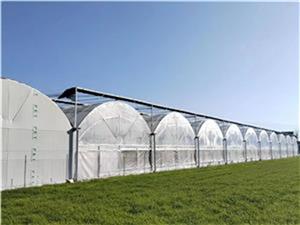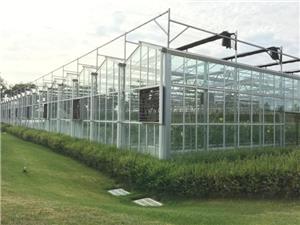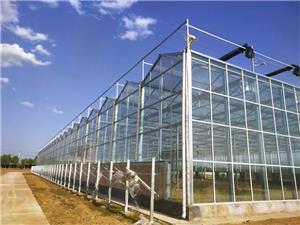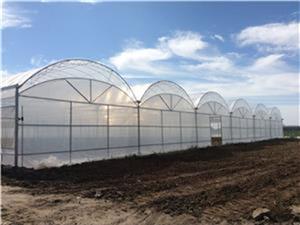Abandoned Greenhouses: A Hidden Concern for Modern Agricultural Development
In the process of advancing agricultural modernization, greenhouse facilities—especially agricultural greenhouses and plastic greenhouses widely used in agricultural production—serve as core infrastructure that effectively resists constraints of the natural environment and creates suitable conditions for crop growth. They have significantly improved the controllability and efficiency of agricultural production. Whether it is agricultural greenhouses used for large-scale cultivation of off-season vegetables or plastic greenhouses that are more cost-effective and flexible to construct, both have been important drivers for regions to develop high-efficiency agriculture and increase farmers' income. However, in recent years, some areas have witnessed the phenomenon of agricultural greenhouses and plastic greenhouses being abandoned randomly after completion. These idle structures not only become "useless objects" in the fields but also cause severe resource waste, bringing a series of tricky problems to rural economy, land resources, social stability and ecological environment. They have thus become an invisible obstacle restricting the high-quality development of modern agriculture.
I. Economic Dimension: Resource Waste and Multiple Economic Losses
The construction and operation of agricultural greenhouses and plastic greenhouses should have been economic growth engines for promoting agricultural industrial upgrading. However, their abandonment directly turns them into heavy economic burdens, triggering chain reactions of losses.
1.1 Construction and Maintenance Costs Totally Wasted
Both agricultural greenhouses (with relatively complex structures and complete supporting equipment) and plastic greenhouses (using plastic films as covering materials) require considerable investment in early-stage construction. The construction of agricultural greenhouses involves land leveling, steel frame erection, temperature control systems (such as heating and ventilation equipment) and irrigation pipelines, with a single greenhouse costing tens of thousands to hundreds of thousands of yuan. Although plastic greenhouses have lower costs, their construction—including frame setup, purchase of high-quality plastic films and configuration of basic irrigation equipment—still requires thousands to tens of thousands of yuan in initial investment. After completion, daily maintenance is also indispensable: agricultural greenhouses need regular inspection and maintenance of temperature control and lighting equipment, while plastic greenhouses require frequent repair of damaged films and reinforcement of frame supports. Once these agricultural greenhouses or plastic greenhouses are abandoned, the early construction funds and subsequent maintenance investments are completely wasted, bringing unbearable economic losses to individual investors, cooperatives and even local governments. For instance, an agricultural enterprise in a certain region, with government support, invested 5 million yuan to build 20 standardized agricultural greenhouses, planning to engage in high-end strawberry cultivation. However, due to incorrect market positioning and the loss of its technical team, the operation was forced to stop after only 18 months. These once "modern planting bases" have now become barren land, with millions of yuan in funds completely sunk.
1.2 Missing Out on High-Value-Added Potential Economic Benefits
The core value of agricultural greenhouses and plastic greenhouses lies in realizing off-season crop cultivation or high-value-added variety breeding through artificial environment regulation. Agricultural greenhouses can rely on precise temperature control to grow organic vegetables and rare flowers, while plastic greenhouses are suitable for cultivating off-season melons, fruits and leafy vegetables. Meanwhile, they can expand revenue channels by integrating picking experiences and agricultural tourism. However, abandoned agricultural greenhouses and plastic greenhouses not only fail to create sustainable economic value but also make local areas miss the opportunity to develop characteristic industries using agricultural resources. Take a village as an example: it originally planned to grow off-season tomatoes in 10 plastic greenhouses, expecting to increase the village collective income by 100,000 yuan annually and drive the employment of more than 50 villagers. Unfortunately, due to poor later management, the greenhouses were abandoned. As a result, villagers lost their additional income sources, and the development of the village collective economy stagnated—turning the original "income-increasing project" into a "regretful endeavor".
1.3 Increasing the Burden on Local Finance
In many regions, the construction of agricultural greenhouses and plastic greenhouses enjoys government subsidies—ranging from subsidies for greenhouse structure construction to equipment purchase, with the proportion of financial subsidies for some projects reaching 30% to 50%. The abandonment of greenhouses means that the financial funds invested by the government fail to play their role in "driving agricultural development" and instead become "ineffective expenditures". What is more troublesome is that to prevent abandoned greenhouses from occupying cultivated land and causing safety hazards, local governments have to invest additional funds in demolishing dilapidated structures and cleaning up residual facilities. In some areas, funds even need to be allocated for land reclamation. These subsequent investments further increase the burden on local finance, forming a double pressure of "construction subsidies + cleaning expenditures".




